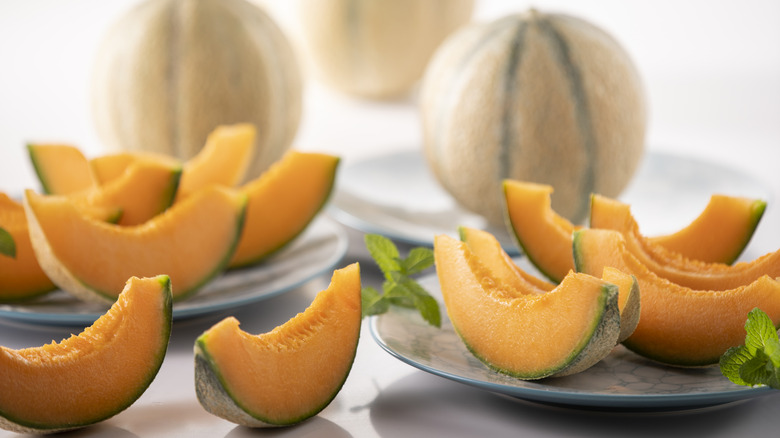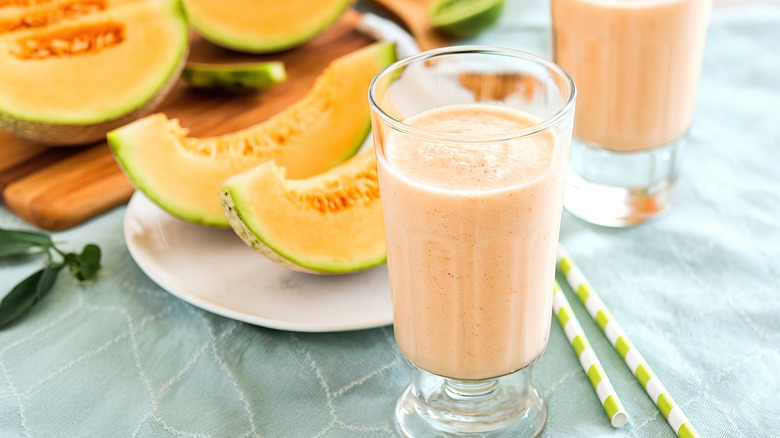Why You Should Never Buy An Unripe Cantaloupe From The Store
Cantaloupes are arguably my favorite summer fruit. Maybe it's because growing up in Colorado, I always had access to fresh, perfectly grown Rocky Ford cantaloupes, even though China takes first place in world production of cantaloupes by a long shot. Sweet, juicy, aromatic, and packed full of vitamins A and C and fiber, what's not to love about this fruit? Well, there are (only) two downsides to this wonder melon: They are more prone to listeria outbreaks than other fruits, so you'll often hear about cantaloupe recalls, and they don't really ripen after they're picked, which is why you should never buy an unripe cantaloupe from the store.
The former is just a sad fact of food production — a cantaloupe's bumpy, hard outer skin is a breeding ground for bacteria. The latter has to do with biology. A lot of popular fruits can ripen after they're picked, like bananas and peaches, because they produce ethylene gas (these are called climacteric fruits) that sends signals to induce ripening. Non-climacteric fruits include citrus fruits, most berries, and watermelons. While cantaloupes are technically climacteric and will soften after picking, the most important factor for a great cantaloupe — their sweetness — is determined on the vine. Once they're harvested, whatever sugar and flavor they have developed stays the same. So if the cantaloupe at the store still has some green to it, steer clear. It just won't taste as good as the others.
Here's what you can do with unripe cantaloupe
If you didn't choose a perfectly ripe cantaloupe from the store, the only thing you can really do with an unripe cantaloupe is let it sit on the counter for the flesh to soften. You can also try the classic brown paper bag trick and wait until the cantaloupe's soft but still somewhat firm — not too crispy, mealy, or stiff. The ideal texture is something that can be easily cut with just a fork and sort of melts in your mouth. But improving the texture mitigates the damage more than fixing it. After all, it's not only softness that we care about — we think about the flavor, too.
And yet the problem remains: An unripe cantaloupe from the store will never be as flavorful as a ripe one. (Maybe that's why people seem to really hate cantaloupe?) So, what to do with an unripe cantaloupe if you prefer not to eat it as is? Some of the best things to do involve blending: Throw some cantaloupe chunks into a smoothie. You can even freeze them first, so you don't have to add ice. You can always make agua de melón, which involves combining cantaloupe, water, sugar, mint, and basil in a blender until smooth. Just make sure to strain it before serving.

